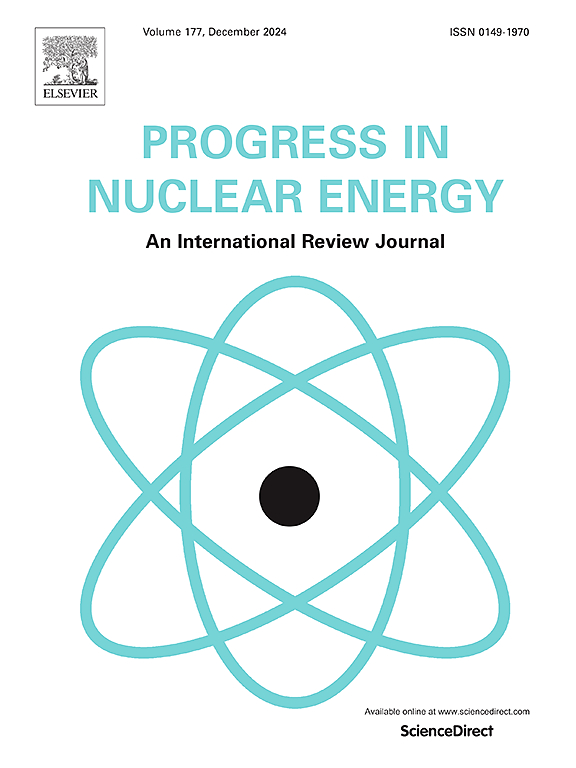Study on flow heat transfer characteristics and mechanism of lithium-lead and helium-xenon
IF 3.3
3区 工程技术
Q1 NUCLEAR SCIENCE & TECHNOLOGY
引用次数: 0
Abstract
To find out the coupling heat transfer problem between liquid lithium-lead (Li-Pb) and helium-xenon (He-Xe) in a Printed Circuit Heat Exchanger (PCHE), a three-dimensional model of a double-straight-through PCHE heat exchange unit was established. This paper employs numerical simulation to investigate the coupled heat transfer characteristics as well as the mechanism between liquid lithium-lead and helium-xenon and to fit the flow heat transfer correlation of lithium-lead under specific working conditions. The results show that the coupled heat transfer of liquid lithium-lead is mainly dominated by thermal conduction, mainly influenced by the wall temperature in contact with the fluid and the heat flux density at the wall. Convective heat transfer is the main mechanism influencing helium-xenon's coupled heat transfer. Modifying the inlet velocity of helium-xenon has a more significant effect on the heat exchanger's performance compared to adjusting the inlet velocity of liquid lithium-lead. Regardless of which side's temperature is changed, the heat transfer amount will be greatly affected, and the heat exchanger's overall heat transfer coefficient is mainly determined by the helium-xenon.
求助全文
约1分钟内获得全文
求助全文
来源期刊

Progress in Nuclear Energy
工程技术-核科学技术
CiteScore
5.30
自引率
14.80%
发文量
331
审稿时长
3.5 months
期刊介绍:
Progress in Nuclear Energy is an international review journal covering all aspects of nuclear science and engineering. In keeping with the maturity of nuclear power, articles on safety, siting and environmental problems are encouraged, as are those associated with economics and fuel management. However, basic physics and engineering will remain an important aspect of the editorial policy. Articles published are either of a review nature or present new material in more depth. They are aimed at researchers and technically-oriented managers working in the nuclear energy field.
Please note the following:
1) PNE seeks high quality research papers which are medium to long in length. Short research papers should be submitted to the journal Annals in Nuclear Energy.
2) PNE reserves the right to reject papers which are based solely on routine application of computer codes used to produce reactor designs or explain existing reactor phenomena. Such papers, although worthy, are best left as laboratory reports whereas Progress in Nuclear Energy seeks papers of originality, which are archival in nature, in the fields of mathematical and experimental nuclear technology, including fission, fusion (blanket physics, radiation damage), safety, materials aspects, economics, etc.
3) Review papers, which may occasionally be invited, are particularly sought by the journal in these fields.
 求助内容:
求助内容: 应助结果提醒方式:
应助结果提醒方式:


